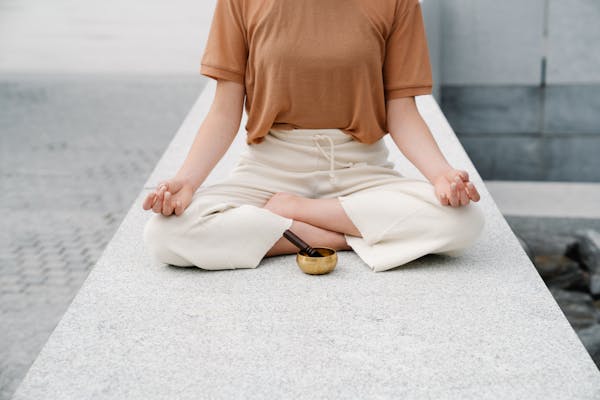Between work, social commitments, and the constant noise of modern living, it can feel like we’re always moving forward without pausing to check in with ourselves. This disconnection can lead to feelings of stress, anxiety, and low self-esteem, often manifesting as a lack of clarity in our thoughts and dissatisfaction with our bodies.
However, by reconnecting with your inner self, you can cultivate mental clarity and body confidence, empowering yourself to live a more balanced and fulfilling life. This article explores various practices that can help you foster a stronger connection with your inner self, enhance mental clarity, and boost body confidence, ultimately leading to a more peaceful, empowered, and confident you.
1.significance to connect with your inner self
Before diving into specific practices, it’s important to understand why connecting with your inner self is so vital. Your inner self refers to your authentic core—the part of you that is grounded in values, beliefs, desires, and passions. When you’re aligned with your inner self, you are more likely to experience peace, clarity, and confidence. On the other hand, disconnection from this core can lead to confusion, stress, and a lack of direction.
Connecting with your inner self brings a range of benefits, including:
- Mental Clarity: When you’re in tune with yourself, your thoughts become clearer, and your mind can focus on what truly matters, free from distractions and confusion.
- Emotional Stability: Reconnecting with your true nature allows you to process emotions in a healthy way, reducing feelings of overwhelm and anxiety.
- Body Confidence: When you understand and accept yourself fully, you are better able to appreciate your body for what it is and cultivate a sense of body confidence.
- Improved Decision-Making: By grounding yourself in your values and desires, you can make decisions that are in alignment with your true self, leading to a more fulfilling life.
To achieve all of these benefits, the key is to practice self-awareness and mindfulness, taking time to nurture your mental, emotional, and physical well-being.
2. Practices for Mental Clarity
Achieving mental clarity is a critical aspect of connecting with your inner self. When your mind is cluttered with worries, distractions, or negative thought patterns, it’s difficult to be present in the moment or make clear decisions. The following practices can help you clear mental fog and bring focus and clarity to your life:
Mindfulness Meditation
Mindfulness meditation is one of the most effective practices for improving mental clarity. It involves focusing your attention on the present moment without judgment, which helps quiet the mental chatter that often clouds our minds.
How to Practice Mindfulness Meditation:.
- Close your eyes and take a few deep breaths, letting go of any tension.
- Focus on your breath as it enters and leaves your body.
- Start with just five to ten minutes per session and gradually increase the time as you become more comfortable.
Regular mindfulness meditation can help you develop a heightened awareness of your thoughts, allowing you to observe them without becoming overwhelmed by them. Over time, this practice leads to improved focus, reduced stress, and greater mental clarity.
Journaling for Self-Reflection
Journaling is another powerful tool for gaining mental clarity. Writing down your thoughts, feelings, and experiences allows you to externalize and process them, helping you to organize your mind and make sense of complex emotions.
How to Journal for Clarity:
- Set aside time each day to write freely, without worrying about grammar or structure.
- Begin by reflecting on your day—how you felt, what you experienced, and any challenges or victories.
- Ask yourself open-ended questions like “What’s on my mind right now?” or “What do I need clarity on?”
- Consider writing affirmations or positive statements about yourself to reinforce self-compassion.
By regularly journaling, you can track your thoughts and emotions, gain insights into your patterns, and develop a deeper understanding of your inner world. This process fosters mental clarity and promotes a sense of emotional balance.
Breathing Exercises
Breathing exercises are simple yet highly effective practices for calming the mind and achieving mental clarity. When you’re stressed or overwhelmed, your breathing tends to become shallow and rapid, contributing to mental fog. Deep, intentional breathing helps slow down your heart rate and relaxes your nervous system, clearing your mind in the process.
How to Practice Deep Breathing:
- Close your eyes and take a deep breath in through your nose for a count of four, hold it for a count of four, then exhale slowly through your mouth for a count of four.
- Repeat this cycle for several minutes, focusing on the sensation of the breath as it enters and leaves your body.
Deep breathing activates the parasympathetic nervous system, which is responsible for rest and relaxation, helping you clear your mind and return to a calm state.
3. Cultivating Body Confidence
Body confidence is about accepting and appreciating your body, no matter its shape, size, or appearance. It involves loving and caring for your body in a way that enhances your overall well-being and allows you to embrace yourself fully. The practices below can help boost body confidence and improve your relationship with your physical self.
Practice Self-Love and Acceptance
Self-love is the foundation of body confidence. It’s essential to embrace your body as it is, without judgment or comparison to societal standards of beauty. Practicing self-love involves recognizing your worth, treating yourself with kindness, and appreciating the unique qualities that make you who you are.
Ways to Practice Self-Love:
- Start each day by looking in the mirror and telling yourself something positive about your body. This could be as simple as saying, “I appreciate my strong legs,” or “I’m grateful for my healthy body.”
- Set aside time to care for your body, whether it’s through skincare, taking a relaxing bath, or engaging in activities that make you feel good about yourself.
- Let go of unrealistic beauty standards and focus on what makes you feel beautiful in your own skin.
The more you practice self-love, the more confident you’ll feel in your own body. Treating yourself with compassion and understanding allows you to connect with your physical self in a positive way.
Move Your Body with Intention
Physical movement is not only important for physical health but also for mental well-being. Engaging in regular exercise can improve body confidence by helping you feel strong, empowered, and capable in your own skin.
Find Movement That You Enjoy:
- Yoga: Yoga is a wonderful practice for cultivating both physical and mental wellness. It encourages mindful movement, flexibility, and strength, which can help you feel more connected to your body.
- Strength Training: Building strength through weightlifting or resistance exercises boosts your sense of accomplishment and shows you what your body is capable of.
- Dancing: Dancing is an expressive form of movement that can help you feel free and confident in your body.
When you move with intention, focusing on how your body feels rather than how it looks, you create a positive relationship with your physical self. Regular movement can also improve posture, increase energy, and reduce stress, all of which contribute to improved body confidence.
Dress in a Way That Feels Empowering
What you wear can have a significant impact on how you feel about your body. When you choose clothing that fits well, flatters your shape, and makes you feel good, your confidence naturally increases.
Tips for Dressing with Confidence:
- Choose Clothes That Fit Well: Avoid wearing clothing that is too tight or too loose. Clothing that fits your body properly can highlight your natural shape and boost your confidence.
- Wear Colors and Styles That You Love: Choose colors and styles that make you feel confident and comfortable. Experiment with different fabrics, cuts, and accessories to express your personality.
- Focus on Comfort: Clothing that is comfortable and allows you to move freely will help you feel more confident in your own body.
When you dress in a way that feels authentic to you, your confidence shines through, helping you connect with your body in a loving and positive way.
4. Cultivating Gratitude and Compassion
Gratitude and compassion are essential practices for both mental clarity and body confidence. By practicing gratitude, you can shift your mindset from focusing on what’s lacking to appreciating the abundance in your life. Similarly, cultivating compassion for yourself and others promotes emotional well-being and strengthens your connection with your inner self.
Gratitude Practice
Take time each day to reflect on the things you’re grateful for. This can help you cultivate a positive mindset and improve mental clarity by focusing on the good rather than dwelling on the negative.
How to Practice Gratitude:
- Keep a gratitude journal where you write down three things you’re grateful for each day.
- Share your gratitude with others by expressing appreciation for the people and experiences in your life.
- Focus on the small things, such as a beautiful sunset, a kind gesture from a friend, or the warmth of your morning coffee.
Focusing on gratitude helps shift your perspective and enhances mental clarity, allowing you to feel more grounded and connected with your inner self.
Self-Compassion
Being kind to yourself is crucial for both mental clarity and body confidence. Self-compassion involves treating yourself with the same kindness, care, and understanding that you would offer a close friend.
How to Practice Self-Compassion:
- When you make a mistake or experience a setback, remind yourself that everyone makes mistakes and that this is part of the learning process.
- Practice mindfulness by being present with your emotions without judgment or criticism.
- Speak to yourself in a nurturing, supportive way, replacing self-criticism with encouragement.
By cultivating self-compassion, you create a foundation of emotional resilience and strength, helping you feel more confident and centered in your body and mind.
Conclusion
Connecting with your inner self is a transformative journey that leads to greater mental clarity and body confidence. By incorporating practices such as mindfulness meditation, journaling, deep breathing, self-love, and physical movement, you can nurture both your mind and body, improving your overall well-being. Remember, this journey is unique to you, and it’s important to take the time to explore what practices resonate with you most. With consistency and patience, you can cultivate a stronger connection with yourself, leading to a more confident and fulfilled life.



